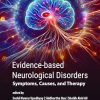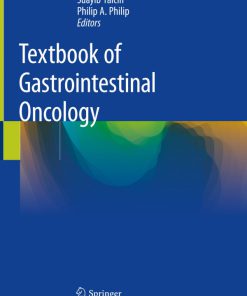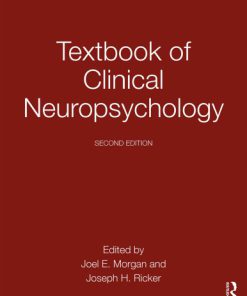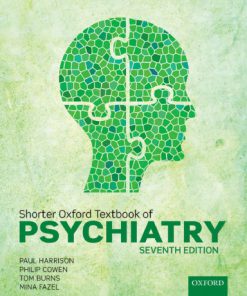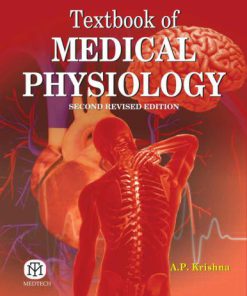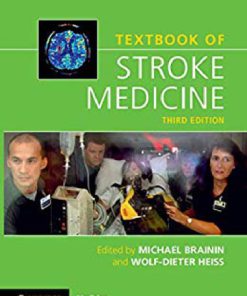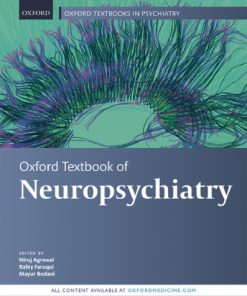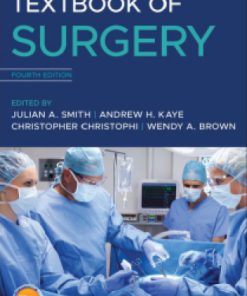Textbook of Tinnitus 2nd edition by Winfried Schlee,Berthold Langguth,Dirk De Ridder 3031356462 9783031356469
$50.00 Original price was: $50.00.$25.00Current price is: $25.00.
Textbook of Tinnitus 2nd edition by Winfried Schlee,Berthold Langguth,Dirk De Ridder – Ebook PDF Instant Download/Delivery:3031356462,9783031356469
Full download Textbook of Tinnitus 2nd edition after payment
Product details:
ISBN 10: 3031356462
ISBN 13:9783031356469
Author:Winfried Schlee,Berthold Langguth,Dirk De Ridder
This book describes the theoretical background of the different forms of tinnitus (ringing in the ears) and detailed knowledge of state-of-the-art treatments of tinnitus. Tinnitus has many forms, and the severity ranges widely from being non-problematic to severely affecting a person’s daily life. How loud the tinnitus is perceived does not directly relate to how much it distresses the patient. Thus, even tinnitus very close to the hearing threshold can be a disabling symptom. It can reduce the quality of life by generating anxiety and concentration problems, impairing the ability to do intellectual work, making it difficult to sleep, causing depression and sometimes even leading to suicide.
Textbook of Tinnitus has filled a void by providing a comprehensive overview about the different forms of tinnitus, their pathophysiology and their treatment. However, since the publication of the first edition of the Textbook of Tinnitus in 2011, tinnitus research has dramaticallyevolved. In view of the substantial increase in knowledge, most chapters in this second edition are newly written and a few original chapters have had major updates. This edition has nine sections, covering the basics of tinnitus, the neurobiology of tinnitus, pathophysiological models, animal research, diagnosis and assessment, various forms of management and treatment, and finally, a look at the future of tinnitus and tinnitus research.
The book will be of great interest to otolaryngologists, neurologists, psychiatrists, neurosurgeons, primary care clinicians, audiologists and psychologists, and students. Because of its organization and its extensive subject index, Textbook of Tinnitus, Second Edition can also serve as a reference for clinicians who do not treat tinnitus patients routinely.
Textbook of Tinnitus 2nd Table of contents:
Part I. Basics About Tinnitus
1. History of Tinnitus
2. Tinnitus, Tinnitus Disorder, and Other Phantom Perceptions
3. Hypersensitivity to Sounds
4. Epidemiology of Tinnitus: Frequency of the Condition
5. Genetic Contribution to Tinnitus and Tinnitus Disorder
6. Environmental and Occupational Risk Factors for Tinnitus
7. Tinnitus Heterogeneity, Different Types of Tinnitus, and Gender Aspects
8. Similarities Between Tinnitus and Pain
Part II. Neurobiology of Tinnitus
9. Anatomy and Physiology of the Auditory System
10. Cochlear Changes After Noise Trauma
11. Molecular Biology of the Central Auditory System and Tinnitus
12. Tinnitus and the Somatosensory System
13. The Role of Auditory Deprivation
14. Neuroplasticity of the Auditory System
15. Structural and Functional MRI-Based Neuroimaging in Tinnitus
16. The Electrophysiological Explorations in Tinnitus Over the Decades Using EEG and MEG
Part III. Pathophysiological Models
17. The Bayesian Brain and Tinnitus
18. Central Gain Model for Tinnitus: A Review on Noise-Induced Plasticity or When Less at the Periphery Is More in the Center
19. The Frontostriatal Gating Model of Tinnitus
20. The Neurophysiological Model of Tinnitus and Decreased Sound Tolerance
21. Psychological Models of Tinnitus
22. Neuroinflammation Model of Tinnitus
Part IV. Animal Research for Tinnitus
23. Animal Models of Hyperacusis: Neural Hyperactivity in Auditory, Emotional, Arousal, Memory, and Motor Networks
24. Translating Animal Findings to Humans in Tinnitus Research
Part V. Diagnosis and Assessment
25. Diagnosis and Flowchart
26. Tinnitus History Taking
27. Tinnitus Questionnaires
28. Clinical Otorhinolaryngological Assessment
29. Audiological Assessment for Tinnitus
30. Clinical Neuroimaging in the Evaluation of Tinnitus
31. Clinical Assessment of the Somatosensory System
Part VI. Management of Specific Forms of Tinnitus
32. Conductive and Sensorineural Hearing Loss
33. Meniere’s Disease, a Set of Rare Disorders with Tinnitus
34. Tinnitus and Vestibular Schwannoma
35. Microvascular Compression of the Vestibulocochlear Nerve
36. Tinnitus and Cerebrovascular Diseases
37. Cervical and Masticatory Somatosensory System
38. Trauma-Associated Tinnitus
39. Tinnitus in Children and Adolescents
40. Pulsatile Tinnitus
41. Hyperacusis and Tinnitus
42. Tinnitus and Psychiatric Comorbidities
Part VII. Tinnitus Treatment
43. Tinnitus Counselling and Psychoeducation
44. CBT for Tinnitus
45. Mindfulness and Tinnitus
46. Auditory Treatments of Tinnitus
47. Tinnitus Retraining Therapy
48. Tinnitus Pharmacotherapy
49. Tinnitus Activities Treatment
50. Neural Therapy, Botulinum Toxin
51. Neurofeedback
52. Noninvasive Brain Stimulation
53. Invasive Brain Stimulation
54. Bimodal Stimulation for the Treatment of Tinnitus
55. Complementary and Alternative Therapies
56. Public and Patient Involvement in Tinnitus Research
57. Mobile Health Solutions for Tinnitus
58. Autonomous Tinnitus Management (Self-Help for Tinnitus)
59. Tinnitus Treatment: Evidence and Guidelines
Part VIII. Additional Approaches of Tinnitus Treatments
60. The Future of Tinnitus Research: “In Crazy We Believe, in Science We Trust”
People also search for Textbook of Tinnitus 2nd:
tinnitus handbook (tyler)
the two types of tinnitus identified are
what are the 2 types of tinnitus
i cured my tinnitus book
p tinnitus
Tags:
Winfried Schlee,Berthold Langguth,Dirk De Ridder,Tinnitus,Textbook
You may also like…
Medicine - Psychiatry
Medicine - Anatomy and physiology
Medicine - Neurology
Medicine - Psychiatry
Medicine - Surgery



